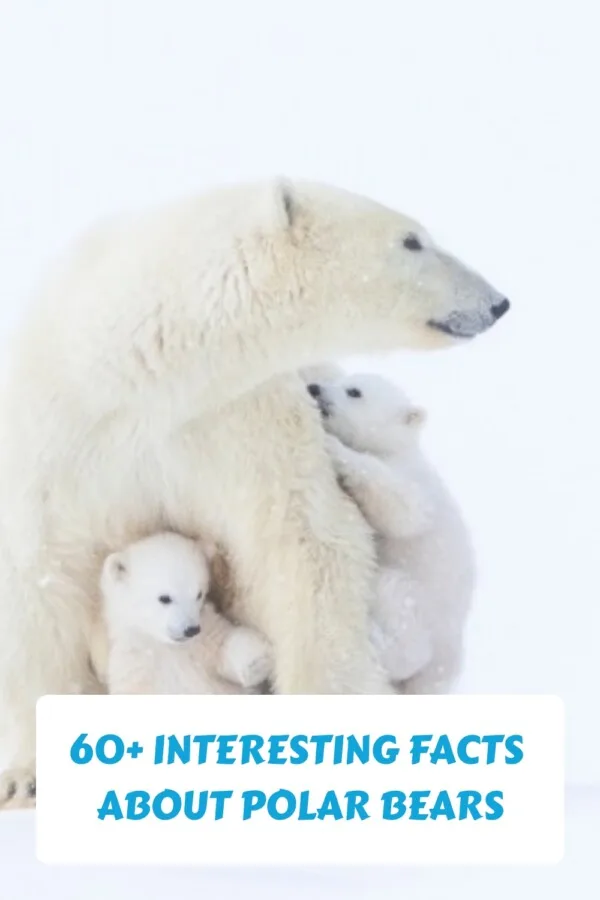Polar bears are majestic animals living in some of Earth’s harshest climates. Characterized by their white fur and black skin, they are the only animals classified as marine mammals due to their reliance on the sea for food. They are an iconic symbol of the Arctic and a powerful ambassador for the need to protect our planet’s remaining wilderness.
Arctic research has revealed some fascinating facts about how polar bears live, including their diet, habitat, and behavior. In this blog post, we’ll explore some of these polar bear facts and discuss the importance of conserving their habitat.
The polar bear is a beloved species facing serious threats from climate change and other human-caused impacts. Understanding their needs and behaviors can help us better protect and conserve this unique species.
Our Favorite Facts About Polar Bears
1. Polar bears are the largest land predators on Earth
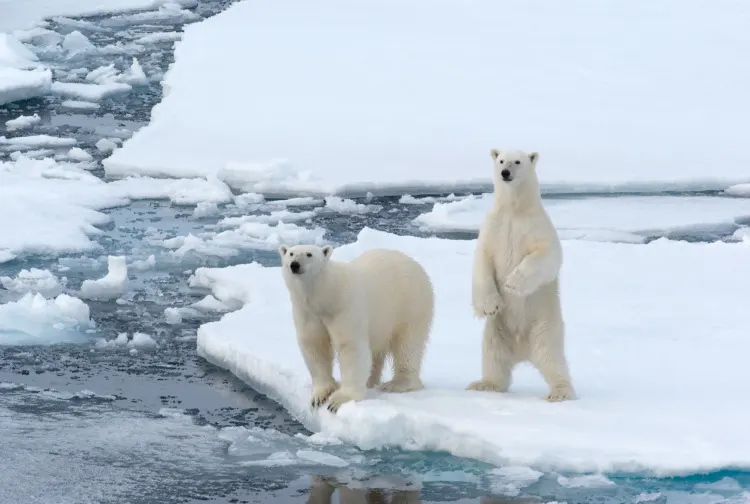
One of the most noteworthy facts about polar bears is that they are the largest land predators on Earth. Male polar bears weigh up to 1,500 pounds and stand up to 11 feet tall on their hind legs. They are also the largest bear species on the planet.
These imposing creatures have a thick layer of fat to keep them warm in the Arctic, and their wide paws are great for traveling through snow and ice. Polar bears are also excellent swimmers, and they can hold their breath underwater for up to two minutes while in pursuit of their prey.
See Related: These 13 Animals Have the Best Hearing in the World
2. Polar bears are native to the Arctic Circle
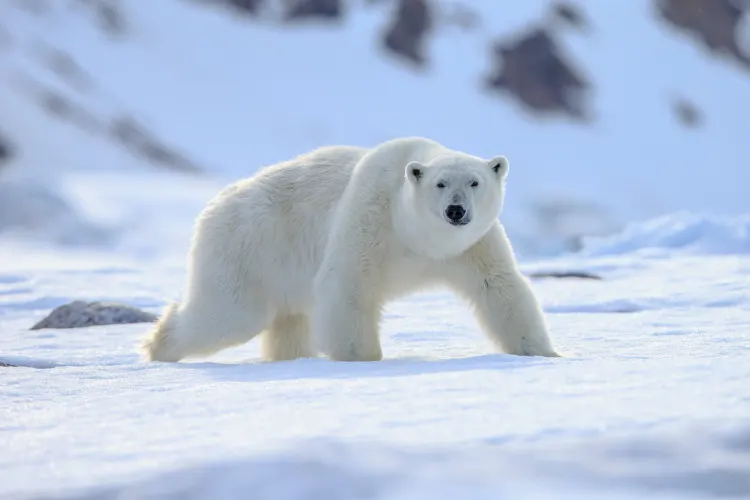
Polar bears are native to the Arctic Circle, a region in the northernmost part of the globe. They inhabit the coastal areas of the Arctic Ocean on sea ice, as well as its surrounding landmasses, including the Canadian Arctic Archipelago, Greenland, and Russian islands.
Polar bears are well-adapted to life in the Arctic Circle, with their thick white fur providing insulation against the cold and their massive paws providing traction on the slippery ice. They are skilled swimmers, able to swim in freezing waters for hours in search of prey.
See Related: Different Types of Bears From Around the World
3. Polar bears typically live between 15 and 18 years in the wild
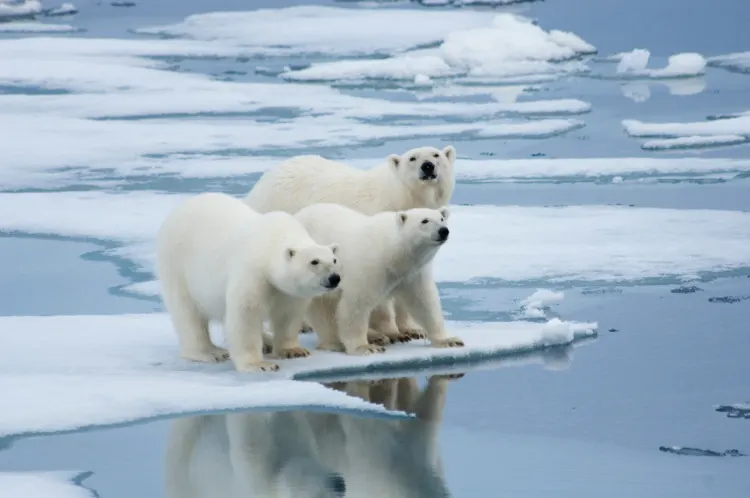
According to scientific research, polar bears typically live between 15 and 18 years in the wild. This is an impressive amount of time, especially considering the harsh conditions these animals endure. As apex predators, polar bears rely on their large body weight and strength to survive in their cold Arctic environment.
They also have fur and a layer of fat to help them stay warm and insulated. Polar bears are also known for their incredible swimming abilities, as they can swim for hundreds of miles in the cold Arctic waters.
4. Polar bears have a thick layer of fur and blubber to help them stay warm
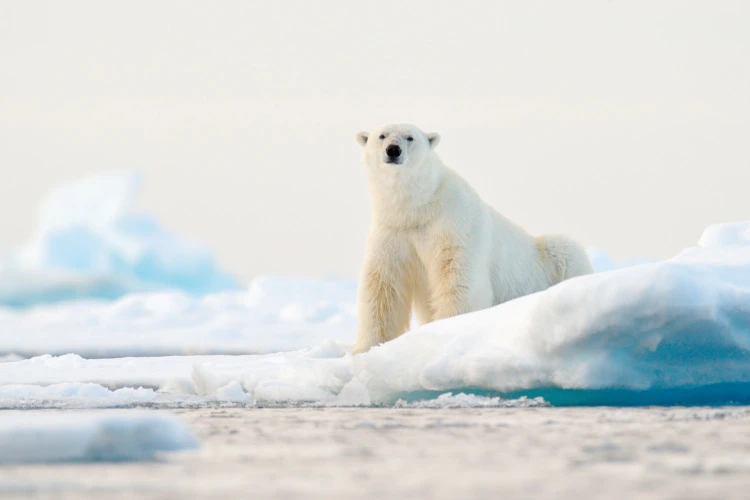
Polar bears are well-adapted to surviving in Arctic temperatures, thanks to their thick layers of fur and fat. Polar bears have two layers of insulation: a thick outer layer of guard hairs and an inner layer of dense fur.
The guard hairs are hollow, allowing air to circulate and trap heat, while the thicker fur provides a thick insulation layer. The blubber layer beneath the fur is fat, which also helps keep polar bear skin warm. These features allow polar bears to remain warm and dry even in the coldest temperatures.
5. Polar bears have an excellent sense of smell
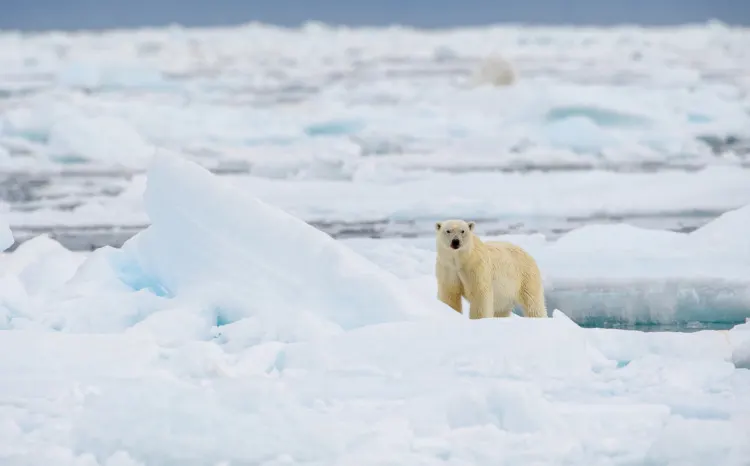
It’s a well-known fact that polar bears have an excellent sense of smell. This is due to the number of olfactory receptors they possess in their noses, which are up to one hundred times greater than those of humans.
This powerful sense of smell allows polar bears to detect prey from far distances and helps them to find their way home. Furthermore, polar bears have demonstrated an ability to follow scent trails that are days old. This incredible sense of smell is just one of the many amazing traits of the male polar bear.
6. Polar bears are skilled swimmers and can swim up to 60 miles per day
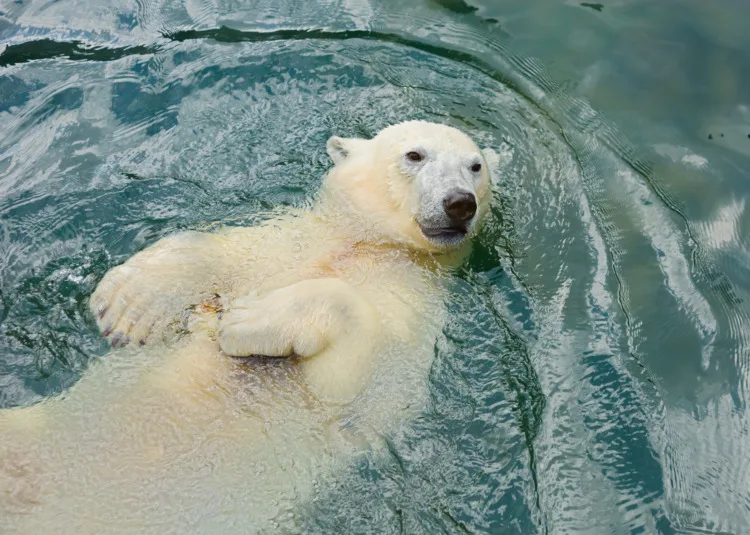
One of the most impressive facts about polar bears is their swimming abilities. These powerful creatures can swim up to 60 miles per day in open water, making them some of the most powerful swimmers in the animal kingdom.
In addition to their impressive abilities in the water, most polar bears can walk up to 10 miles on land to reach their destination. This means they can move long distances on both land and sea.
7. Polar bears are classified as a vulnerable species by the IUCN
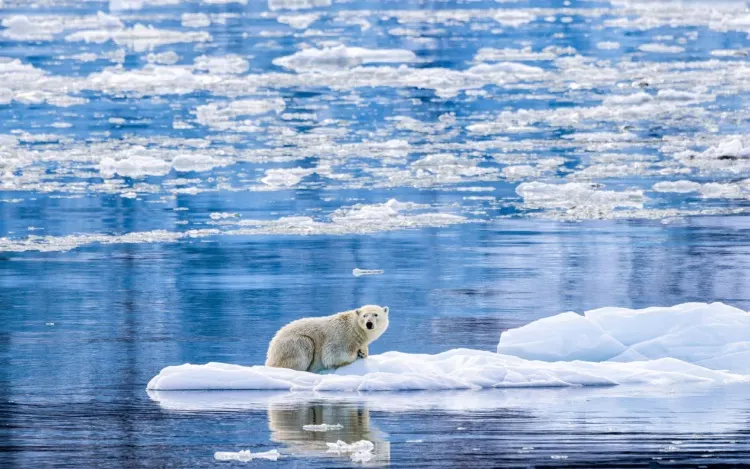
The International Union for Conservation of Nature (IUCN) has classified polar bears as a vulnerable species due to the effects of climate change and other factors. The rapid decline in sea ice due to climate change has caused a decrease in the availability of their preferred food, seals, as well as a decrease in their habitat.
In addition, pollution and hunting have also contributed to the decline of polar bear populations. It is estimated that the global population of polar bears may have decreased by up to 30% over the last three generations. As such, protecting and conserving the polar bear population is important, as they are an important part of the Arctic ecosystem.
See Related: Grizzly Bear vs Black Bear: What’s the Difference?
8. Polar bears are apex predators and feed mainly on seals
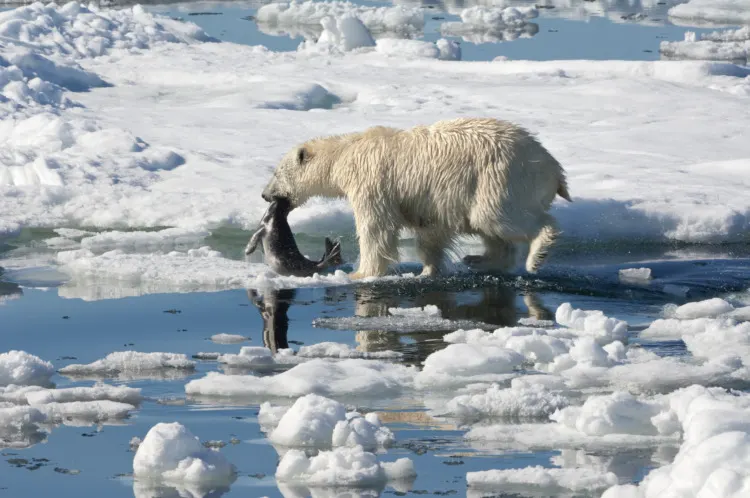
As one of the most recognizable animals found in the Arctic, polar bears are apex predators that feed mainly on seals. Polar bears spend significant time on the melting sea ice to hunt seals. This diet provides them with abundant nutrients, including fats and proteins, which are essential for their survival in the harsh environment of the Arctic.
In addition to seals, polar bears also feed on other marine mammals, such as walruses, whales, and birds. Polar bears have also been known to scavenge for food, such as carrion and other detritus, when the opportunity presents itself. These facts about other bear species of polar bears illustrate their importance in the Arctic ecosystem.
9. Polar bears are powerful hunters and can take down large prey such as a walrus
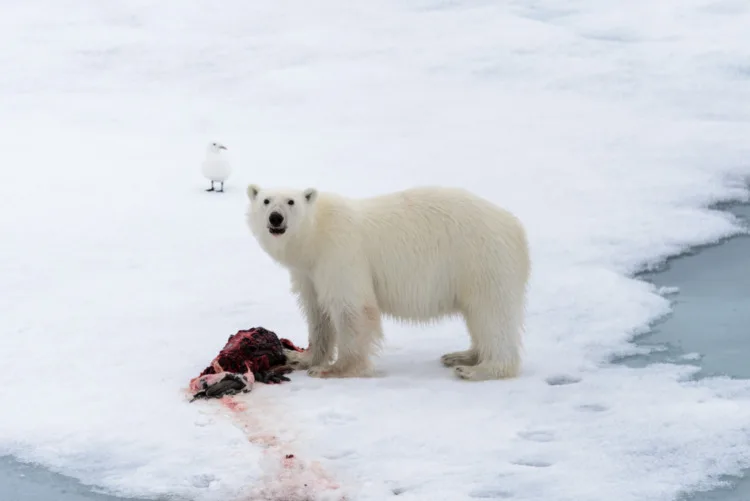
One of the most impressive facts about polar bears is their exceptional hunting skills. Despite their large size, these predators can be incredibly stealthy and agile. Their strong jaws and sharp claws can take down large prey like walrus.
They are also adept swimmers and can hold their breath for long periods while they search for food. The polar bear’s powerful hunting skills have enabled them to become top predators in the Arctic food chain.
10. Polar bears face the threat of climate change and habitat loss due to human activities.
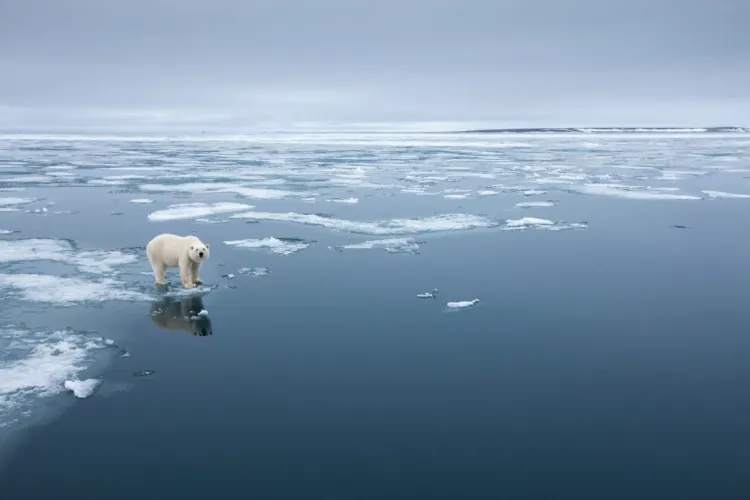
Polar bears are facing an uncertain future due to the threat of climate change and habitat loss caused by human activities. Polar bears rely on sea ice for hunting, breeding, and resting, and melting sea ice, this impacts their ability to find enough food to survive.
In addition, polar bears are also threatened by oil and gas development, industrial activities, shipping, and pollution. These human activities are contributing to the decline of their habitat and further threatening their population. Crucial that we take action now to help protect polar bears and their habitat for future generations.
See Related: Sun Bear: Why Is It Endangered?
Other Polar Bears Facts
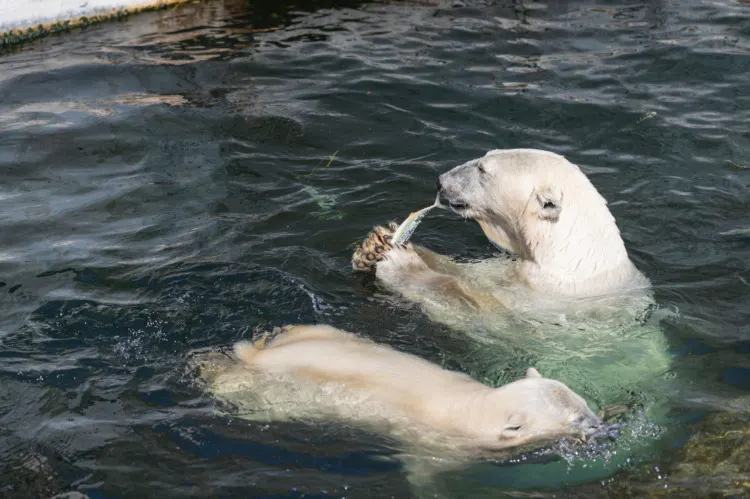
1. Polar bears are scientifically known as Ursus maritimus, which means “maritime bear.”
2. They are the largest species of bear. Adult males can weigh between 900 and 1,600 pounds.
3. Polar bears are considered marine mammals because they spend most of their lives on the sea ice of the Arctic Ocean.
4. They have a layer of fat, known as blubber, that can measure up to 4.5 inches thick, which helps them stay warm in the frigid Arctic temperatures.
5. Polar bears have black skin underneath their fur to absorb and retain heat from the sun.
6. Their fur is not actually white; it’s translucent and appears white because it reflects light.
7. Polar bears are excellent swimmers and can swim for long distances, reaching speeds of up to 6 mph in the water.
8. They primarily eat seals and use their keen sense of smell to detect them up to a mile away.
9. Polar bears have been known to fast for several months during the summer when food is scarce.
10. They have large paws, which are great for swimming and distributing weight on thin ice.
11. Polar bears do not hibernate like other bears, but pregnant females will den to give birth and care for their young.
12. Female polar bears usually give birth to twins.
13. Newborn polar bears are about the size of a rat and weigh little more than a pound.
14. Polar bears have a slow reproductive rate, which makes population recovery more difficult.
15. They are solitary animals, except for mothers with cubs or during the mating season.
16. Polar bears communicate through body language, vocalizations, and scent markings.
17. They have no natural predators, but humans and climate change are significant threats.
18. the International Union for Conservation of Nature (IUCN) classifies polar bears as vulnerable.
19. They can reach speeds of up to 25 mph on land.
20. Polar bears have an excellent sense of hearing and sight, comparable to a human’s.
21. They are the most carnivorous of all the bear species.
22. Polar bears can live up to 25 years in the wild, but some have been known to live into their 30s.
23. They have a third eyelid that helps filter UV light.
24. Polar bears have 42 teeth, which they use for catching food and for aggressive behavior.
25. They are found in five nations across the Arctic: the U.S. (Alaska), Canada, Russia, Greenland, and Norway.
26. Polar bears often spar in play fights, which helps them practice for the real fights of the mating season.
27. They are excellent divers and can dive up to 15 feet to catch food.
28. Polar bears are very clean and will often wash off after eating.
29. They have a very strong sense of smell, which they use to find seals breathing holes in the ice.
30. Polar bears can jump up to 6 feet out of the water to surprise and catch seals.
31. They are known to cover their black noses with their paws while hunting to blend in completely with the ice and snow.
32. Polar bears can overheat more easily than they can freeze.
33. They are left-handed, or rather, left-pawed.
34. Polar bears’ fur is so efficient at insulating them that they are nearly invisible under infrared photography.
35. They have a special liver that allows them to process large amounts of vitamin A, which they get from their seal diet.
36. Polar bears’ feet are up to 12 inches wide, which helps them navigate the icy Arctic terrain
37. They are known to travel great distances, with some recorded journeys over 1,000 miles.
38. Polar bears have a unique way of walking, called “direct register gait,” where their hind feet land in the imprint of their front feet to reduce heat loss.
39. They have a special adaptation called “delayed implantation,” where a fertilized egg will float in the uterus until conditions are right for implantation.
40. Polar bears use tools, such as ice blocks, to kill their prey.
41. They are one of the few animals that will actively hunt humans.
42. Polar bears have a unique greeting ritual where they touch noses.
43. They are known to be very patient hunters, sometimes waiting for hours next to a seal’s breathing hole.
44. Polar bears are not territorial and have been observed sharing food.
45. They have a “vestigial tail” only 2-4 inches long.
46. Polar bears’ fur is oily and water-repellent, allowing them to shake off water and ice after swimming.
47. They are known to slide down slopes on their bellies, seemingly for fun.
48. Polar bears’ home, the Arctic, is named after them. “Arctic” comes from the Greek word for “bear,” and “Antarctic” means “opposite of the bear.”
49. Polar bears have a high-fat diet, with blubber over 50% of a seal’s body mass.
50. Despite their size and power, polar bears are not the official national animal of any country.
Polar bears are amazing creatures that have survived in one of the harshest environments on earth. They are powerful swimmers and use their strength and size to hunt and feed on seals. They are losing their habitat due to climate change and are now considered vulnerable species. We must protect their environment and ensure their continued survival for future generations.
Related Resources
- What Attracts Bears? Here’s Several Things to Know
- These Are the Strongest Animals in the World
- Most Beautiful & Majestic Animals in the World

